Introduction
Imagine your content not just appearing in search results—but being directly quoted or featured by AI assistants, voice search tools, or chatbots. That’s the magic of Answer Engine Optimization (AEO). At Webyansh, we’re always exploring ways to help your brand stand out in an increasingly intelligent search landscape.
In this in-depth guide, we’ll show you how to increase website traffic with AEO, covering:
- What AEO is and why it matters for driving traffic using AI engines
- Step-by-step process to implement AEO and see tangible results
- SEO-rich tactics—from keyword planning to content structuring and brand mention strategies
- Common mistakes to avoid and how to make the future of AEO work for your agency
- Real-world insights, including AEO brand mentions and traffic increase tips
- A robust FAQ answering your most pressing questions
Whether you’re a startup, SME, or established brand, Webyansh will guide you to embrace AEO to drive measurable traffic growth and authentic brand visibility.
What Is AEO (Answer Engine Optimization)?
Understanding AEO: Beyond Traditional SEO
Answer Engine Optimization (AEO) is the strategic optimization of your content so that AI-powered assistants, voice tools, and answer engines (like chatbots and voice search platforms) can extract, understand, and present your content directly to users. In today’s AI-first world, AEO is critical—not just for ranking on search engines, but for being the trusted answer.
Key Differentiators:
- Search vs. Serve: Unlike SEO, which aims at ranking pages, AEO aims for being served as the answer.
- Featured responses: Optimized for snippets, voice assistants, and AI answers that drive AEO website traffic.
- Brand mentions: More mentions of your brand across AI responses means higher visibility and search authority—what we call AEO brand mentions.
Why AEO Matters for Traffic and Brand: The Market Reality
- Higher click-through rates: Being the answer featured by AI tools tends to inspire trust and curiosity—boosting traffic.
- Authority and trust: AI-powered responses citing your brand reinforce credibility.
- SEO synergies: AEO and traditional SEO complement each other—lifting your site in SERPs while capturing AI-driven traffic.
- AI Overviews are present in a notable portion of Google desktop searches in the U.S., altering how information is consumed and how brands get surfaced.
- A growing share of users turn first to AI assistants for answers, accelerating the shift from “searching” to “getting an answer,” and compressing the discovery funnel.
- Voice and conversational queries keep expanding, favoring long-form, question-based intent over fragment keywords.
- Brands tracking LLM visibility report month-over-month growth in AI-driven traffic and higher conversion rates from AI-origin referrals when optimized properly

AEO vs. SEO: Key Differences You Need to Operationalize
- Outcome: SEO optimizes for rankings and CTR; AEO optimizes for citations, brand mentions, and inclusion inside AI answer boxes.
- Content shape: SEO leans on keyword targets and depth; AEO favors concise, direct answers within comprehensive pages, with Q&A and snippet-ready formatting.
- Signals: SEO relies on backlinks and technical hygiene; AEO layers in entity clarity, structured data, author/organization signals, and reputation mentions across sources LLMs trust.
- Measurement: SEO counts rankings and clicks; AEO adds LLM share of voice, AI citations, zero-click impressions, and answer inclusion rates.
Both disciplines overlap; AEO is the next chapter, not a replacement
Step-by-Step Process to Increase Website Traffic with AEO

Step 1: Map Intent to Questions, Not Just Keywords
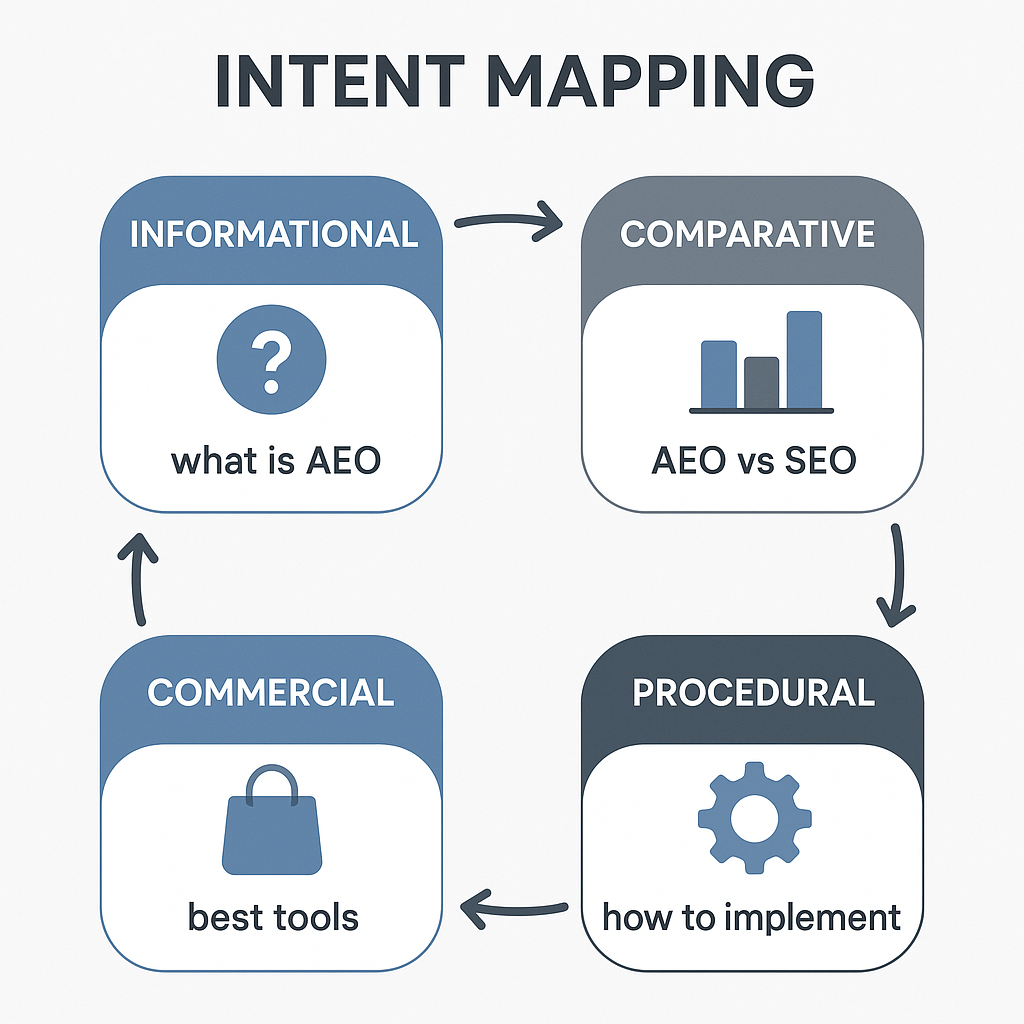
- Build topical maps around user questions: informational (“what is AEO”), comparative (“AEO vs SEO”), procedural (“how to implement AEO”), and commercial (“best AEO tools for SMEs”).
- Use People Also Ask patterns and long-tail, conversational queries to shape content outlines that lead with answers.
- Prioritize head terms for hubs and long-tail Qs for spokes, forming topical clusters with internal links to reinforce entity comprehension.
Step 2: Structure Pages for AI Answer Extraction
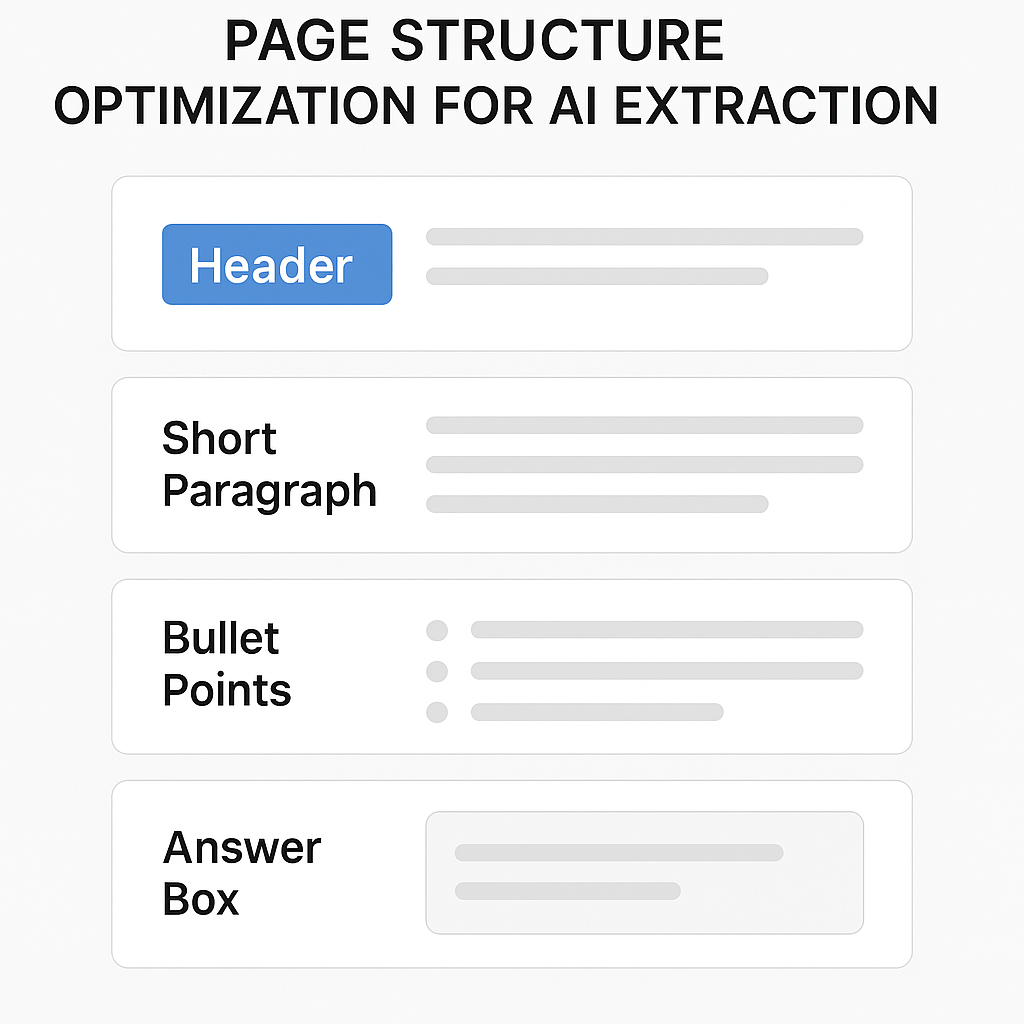
- Lead with a concise definition or answer in <60 words before expanding, improving snippet suitability and voice-read responses.
- Use H2/H3 question headings, short paragraphs, bullet lists, and step-by-step formats to match AI extraction patterns.
- Add “Key Takeaways” and “In Brief” boxes that summarize the page for both users and AI.
Step 3: Implement Comprehensive Structured Data

- Apply JSON-LD for Organization, Article, Author, FAQPage, HowTo, Product/Service, LocalBusiness, and Speakable where relevant.
- Validate schema; keep brand, author, and entity identifiers consistent across pages to strengthen knowledge graph alignment.
- Use FAQ schema on pages with genuine Q&A content to increase eligibility for rich responses and voice answers.
Step 4: Optimize for Brand Mentions in AI Answers
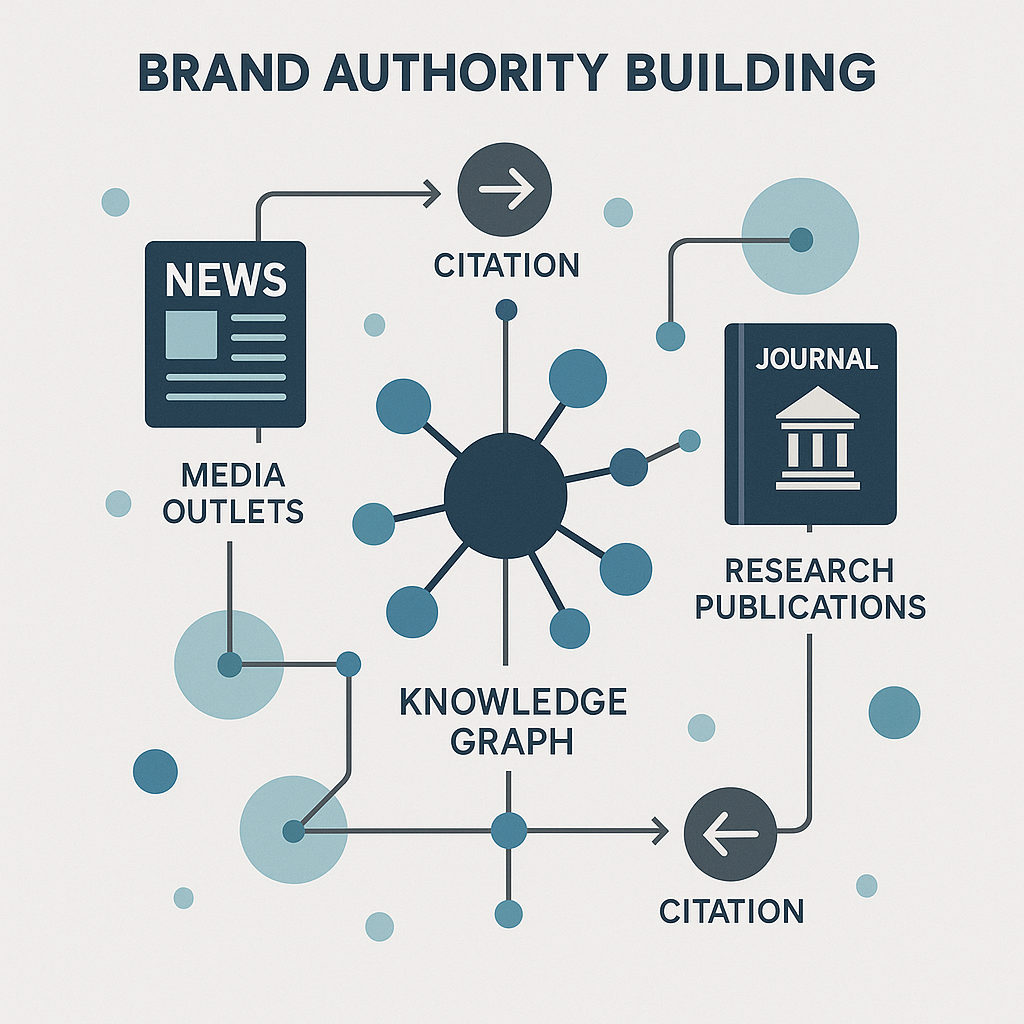
- Earn mentions in sources LLMs routinely ingest: reputable blogs/media, niche publications, Wikipedia-type entities, Q&A forums, and high-signal community platforms where credible citations accrue.
- Publish original research, frameworks, and benchmark data that get referenced by journalists and analysts, creating high-authority signals for AI engines.
- Ensure NAP/entity consistency across major profiles; align descriptions and categories to reduce ambiguity in brand resolution.
Step 5: Build AI-Readable Authority and Trust
.png)
- Demonstrate E-E-A-T across pages: expert bylines, credentials, transparent sourcing, and clear update timestamps.
- Consolidate author profiles with structured Author schema and link to their relevant credentials or portfolios to reinforce expertise.
- Include facts, stats, and claims with clear attribution to reputable sources; AI models favor verifiable information.
Step 6: Technical Readiness for AI and Crawlers
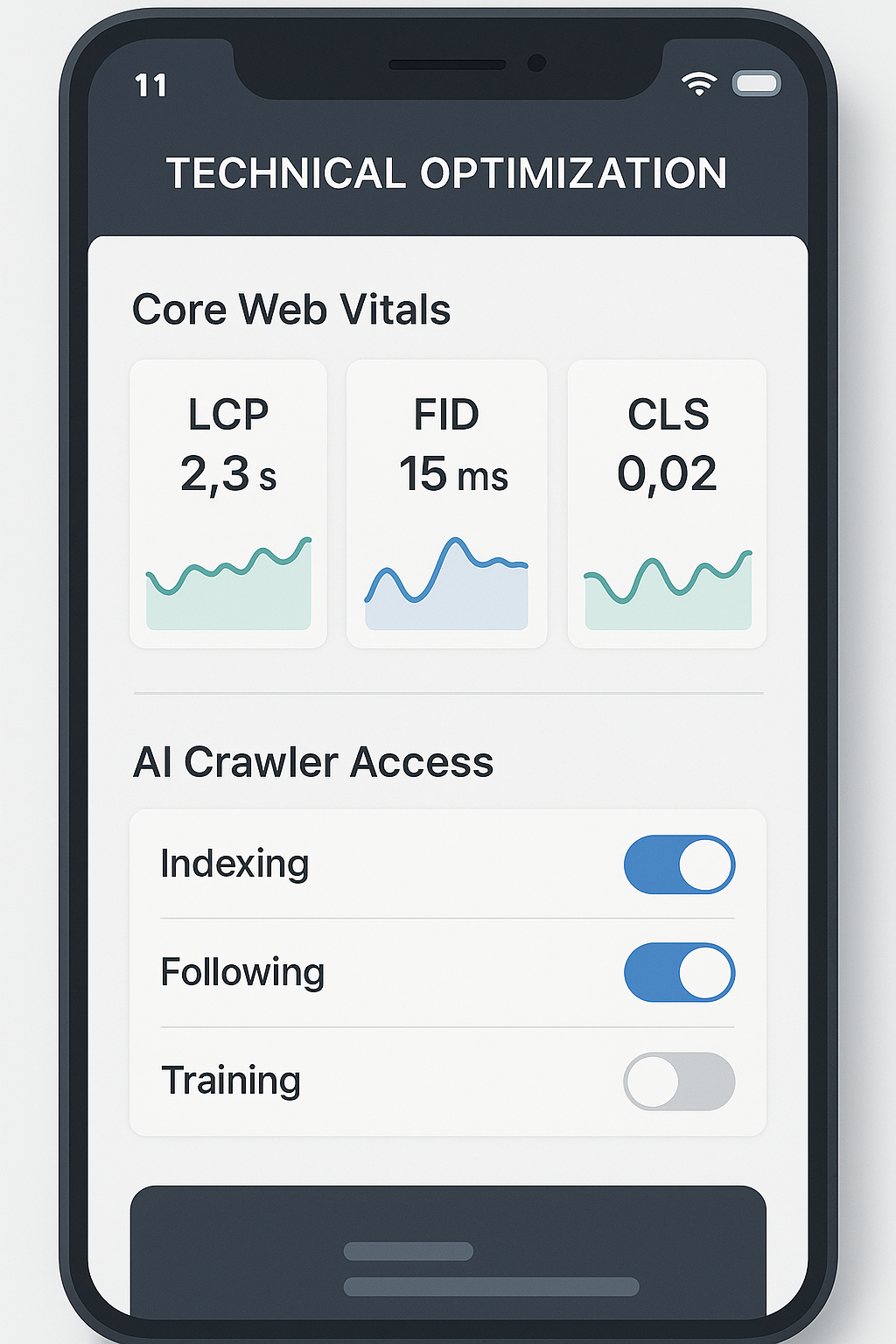
- Ensure fast performance, clean HTML, mobile-first design, strong Core Web Vitals, and proper indexing signals.
- Provide explicit access rules for AI crawlers when appropriate and maintain an AI-aware metadata strategy (including emerging standards like LLMs.txt where aligned with policy).
- Maintain canonicalization discipline to avoid duplicate ambiguity that can dilute AI retrieval.
Step 7: Voice and Conversational Optimization
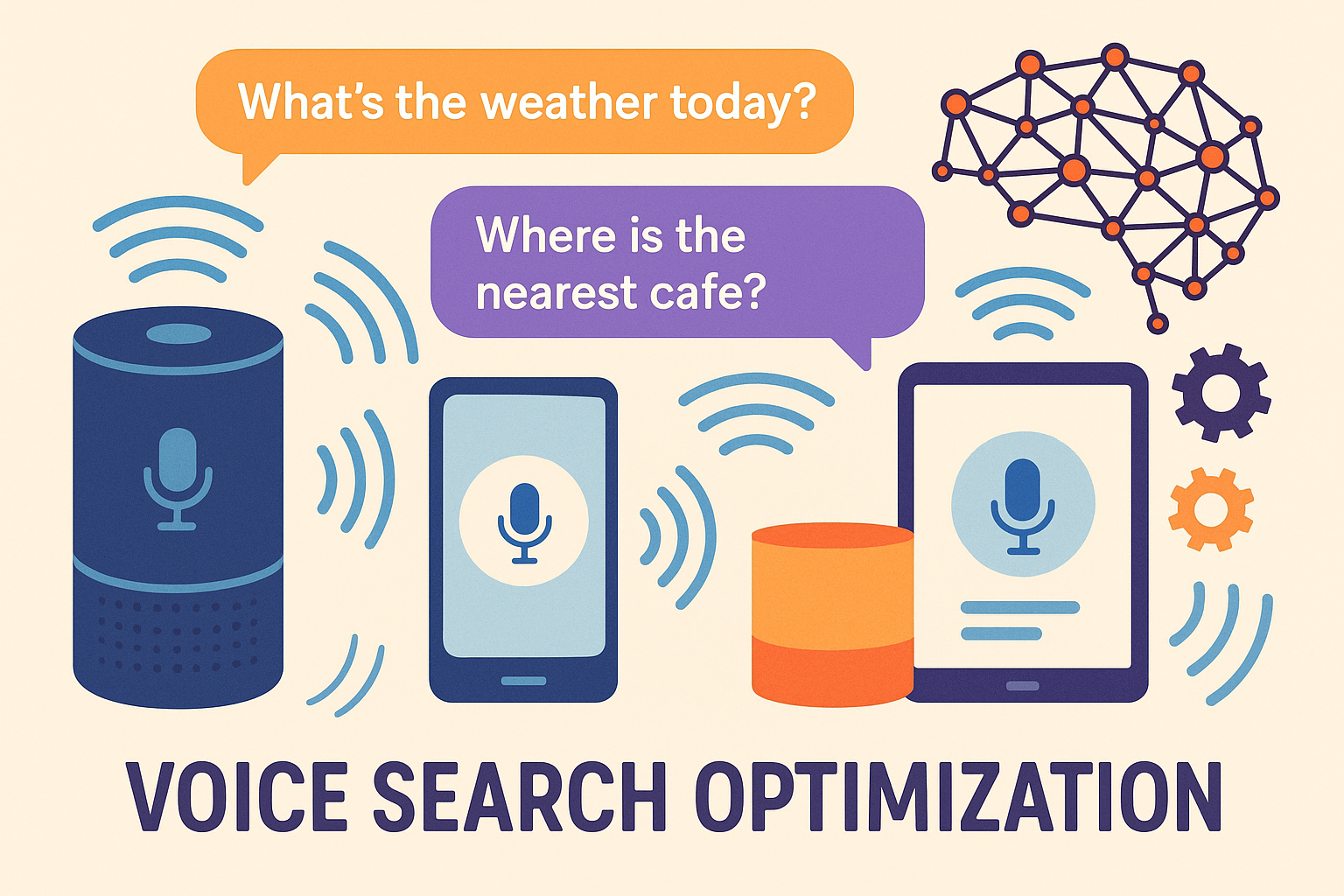
- Create question-based content with natural phrasing and concise answers suitable for voice assistants.
- Use Speakable schema for sections well-suited to audio responses, where applicable.
- Target local and transactional intents with clear, direct, and short answers followed by detail for deeper follow-ups.
Step 8: Featured Snippets, Lists, and Comparisons
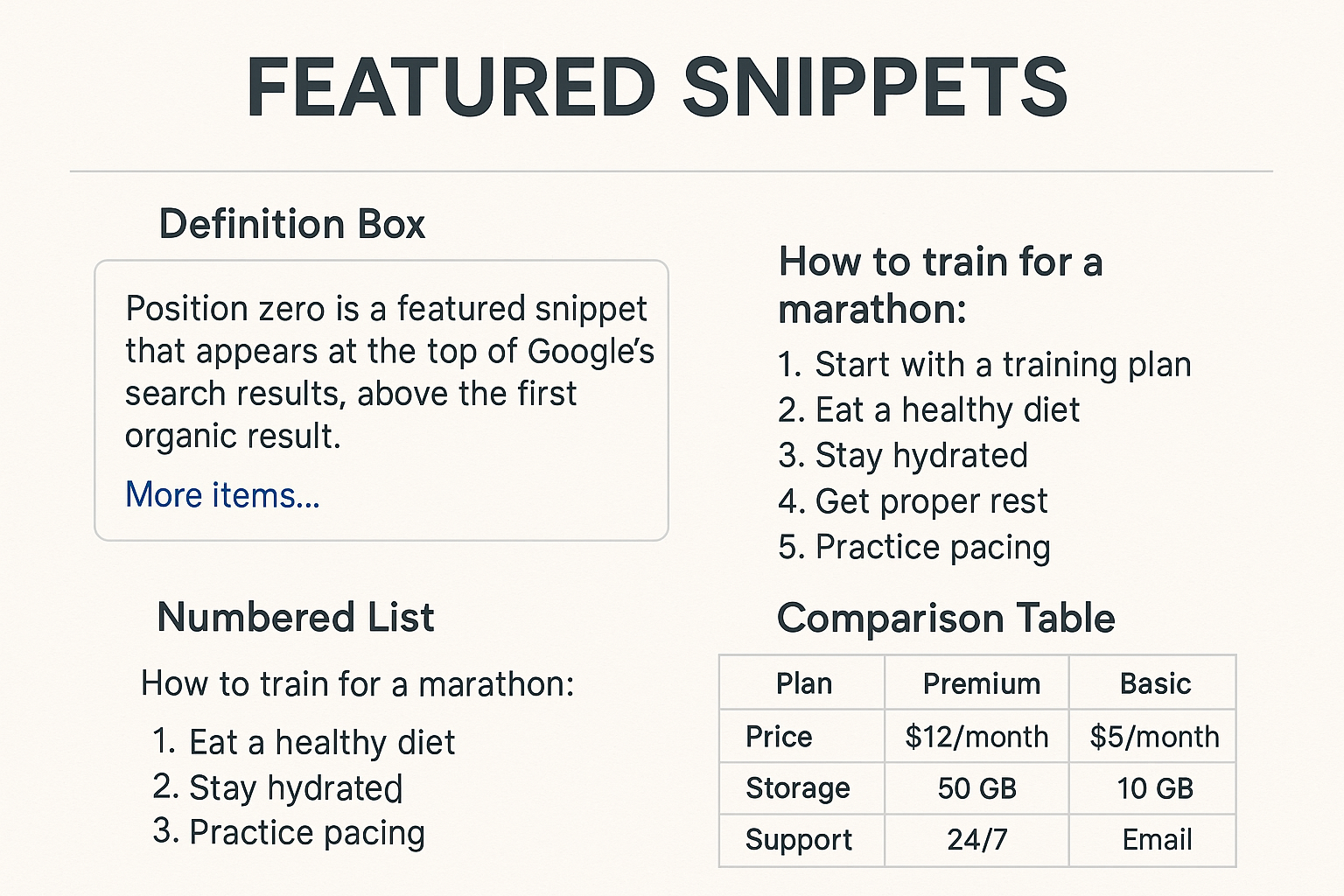
- Format content for snippet eligibility: definition boxes, numbered steps, pros/cons, side-by-side tables, and short paragraphs under 60–80 words for key answers.
- Build structured comparison pages with standardized attributes and clear headings; AI engines rely on consistent matrices to synthesize recommendations.
- Include visual summaries (alt-text optimized) and concise captions to improve multimodal comprehension.
Step 9: Content Depth with Skimmable Design
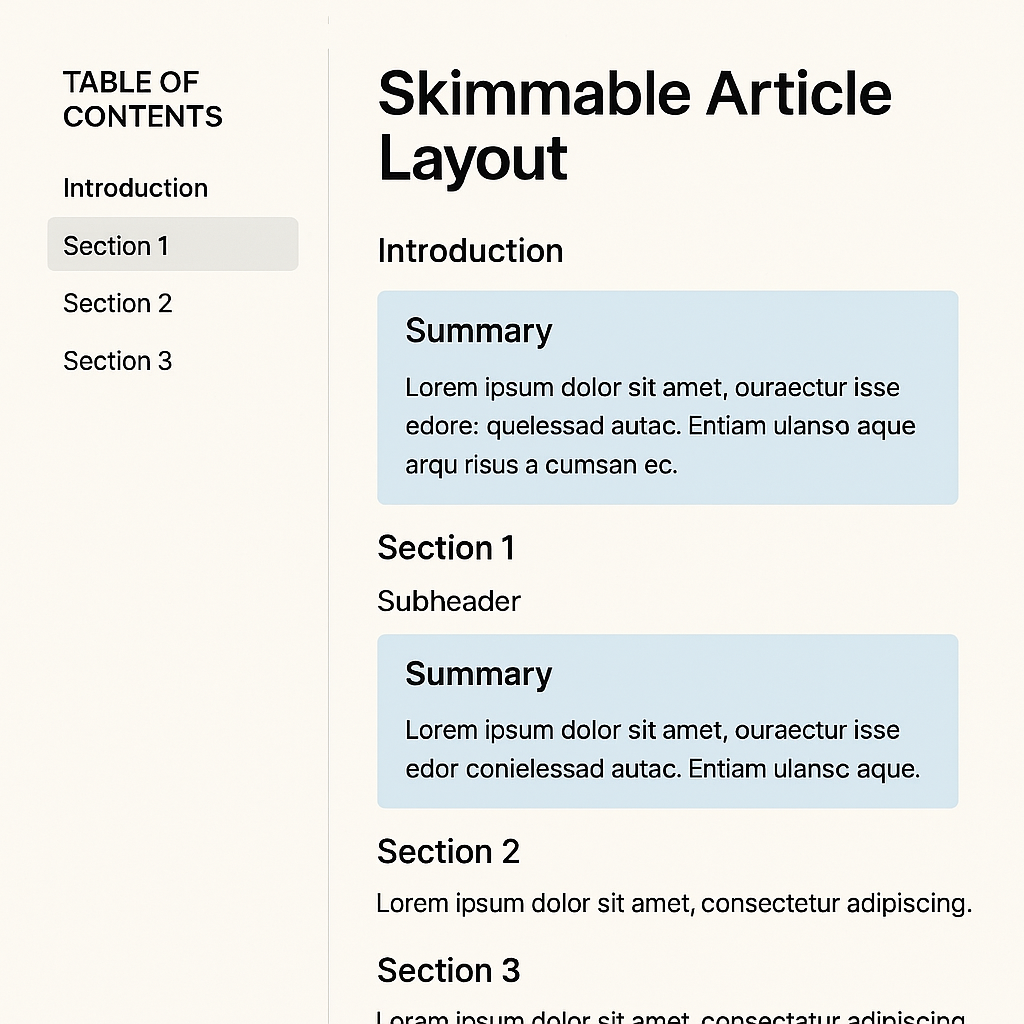
- Balance depth with clarity: comprehensive hubs plus skimmable sub-sections maximize coverage while staying answer-friendly.
- Use TOCs, jump links, and summary blocks to help users and AI locate the right section quickly.
- Refresh high-value pages quarterly with new data and examples; AI engines favor current, maintained content.
Step 10: Measure AEO Visibility and Iterate
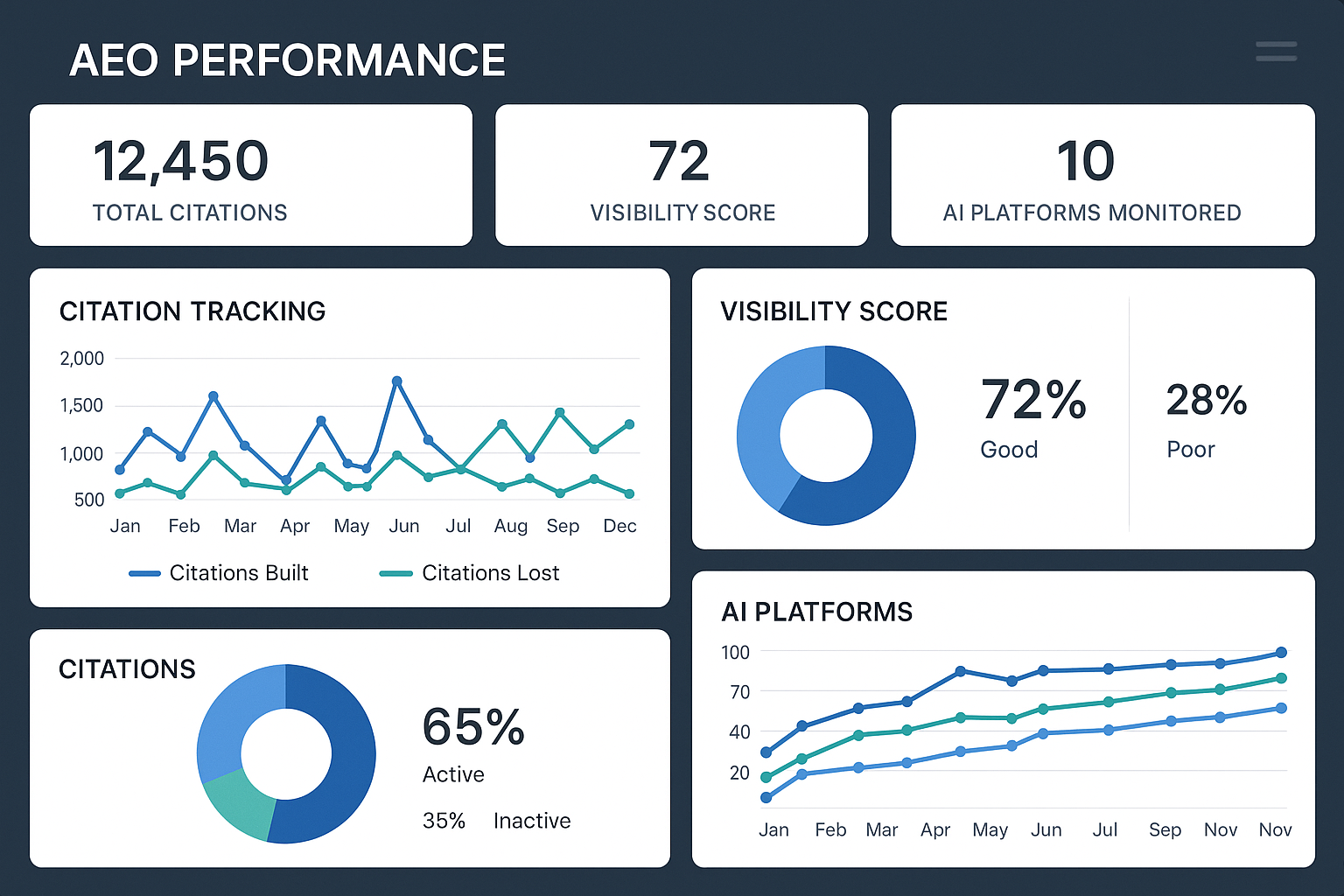
- Track LLM share of voice and citations in AI answers across target queries, plus zero-click impressions and branded search lift.
- Monitor featured snippet captures, FAQ rich results, and AI Overviews inclusion rates on priority topics.
- Expand question coverage where visibility lags and reinforce authority signals where citations underperform
Content Architecture That AI Understands
- Topic clusters: AEO fundamentals, AEO vs SEO, schema & structured data, voice optimization, snippet strategies, brand mentions, measurement, tools, and future trends.
- Page templates:
- Definition pages with concise answers and proof points.
- “How to” guides with numbered steps and FAQ schema.
- Comparison pages with standardized attributes and pros/cons.
- Research/insights pages with original data, charts, and quotable summaries.
- Internal linking: From hub to spokes and between adjacent topics using descriptive anchors, clarifying relationships for both users and AI.
Structured Data: The AEO Power Stack
- Organization schema: establish brand identity, logos, social profiles, and contact details.
- Article/BlogPosting and Author schema: declare authorship, expertise, and update frequency.
- FAQPage and QAPage: maximize answer eligibility for common queries; keep responses concise and accurate.
- HowTo schema: stepwise guides for procedural topics.
- LocalBusiness schema: critical for service areas and voice queries with local intent.
- Speakable schema: flag short, voice-suitable sections for assistants that support it.
Validate regularly and keep entity attributes synchronized across pages and profiles to strengthen knowledge graph alignment.
Brand Mentions in AI Answers: Strategies That Actually Work
- Publish original, citable assets: data reports, industry benchmarks, frameworks, and checklists that analysts and journalists reference.
- Earn mentions on reputable publications and community platforms that LLMs consistently trust and crawl.
- Maintain a consistent brand entity footprint: same organization name, description, categories, and identifiers across major directories and profiles.
- Encourage third-party reviews and case studies that describe concrete outcomes, not fluffy claims; AI favors verifiability.
- Monitor AI mentions and fill gaps: where your brand isn’t cited but competitors are, create targeted assets and outreach to secure inclusion.
On-Page Techniques That Lift AEO Visibility
- Answer first, elaborate second: provide a direct response up top, then add nuance, examples, and edge cases.
- Use question headings and scannable blocks: H2/H3 phrased as queries, bullets, short paragraphs, and tables.
- Include “Why it matters” and “When to use” sections to align with user intent and LLM evaluation criteria.
- Add examples and mini-case snippets that can be quoted within AI summaries.
- Keep voice answers tight: craft sub-60-word definitions and sub-100-word procedure summaries for voice playback.
Technical SEO Foundational to AEO Success
- Fast, stable, mobile-first pages; strong Core Web Vitals and minimal layout shift for easier parsing.
- Clean HTML, semantic headings, and descriptive alt text to strengthen multimodal understanding.
- Clear canonicalization, sitemaps, and indexation logic so AI crawlers reliably find the authoritative version.
- Error-free schema and consistent metadata across templates for predictable extraction.
Common Mistakes with AEO—and How to Fix Them
- Treating AEO as “just add FAQ schema”: AEO requires question-led content, brand mention strategies, and entity clarity—not just markup.
- Overloading with generic Q&A: Low-quality, duplicate, or vague answers reduce trust and hurt inclusion in AI summaries.
- Ignoring brand reputation signals: If third-party sources don’t mention or validate the brand, AI has little reason to cite it.
- Missing structured data breadth: Sparse or incorrect schema limits eligibility for rich and voice responses.
- Neglecting measurement: Without tracking LLM visibility and citations, optimization efforts lack feedback loops.
AEO Performance Measurement: What to Track in 2025
- LLM share of voice: how often the brand appears across AI answers for target topics.
- AI citations and mentions: presence and prominence in generated responses across tools.
- Zero-click visibility: featured snippet captures, AI Overview inclusions, and FAQ rich results.
- Branded search growth: uplift in branded queries after sustained AI visibility.
- Referral signals: traffic and conversions from AI-origin pathways where identifiable, plus assisted conversions attributed to awareness from AI answers.
Use these metrics to prioritize topics, identify content gaps, and double down on assets that earn citations consistently.
Future of AEO: What’s Next
- Greater integration of AI Overviews and similar features will increase the proportion of queries resolved by synthesized answers, raising the bar for inclusion.
- Voice-first discovery will keep expanding, pushing more conversational content and speakable sections into core templates.
- Entity-first optimization will deepen, with structured data and consistent identity signals becoming table stakes for inclusion.
- New metadata standards for AI crawlers and LLMs will mature, formalizing guidance on how content should be consumed and credited.
- Measurement will evolve beyond clicks to multi-touch visibility models that account for influence inside AI experiences.
AEO is not a fad; it’s the operating system for discoverability in an AI-led landscape.
AEO for Startups and SMEs: Practical, High-Impact Plays
- Start with your revenue-critical topics and build Q&A-led cornerstone pages that directly answer buyer questions.
- Add FAQ schema to genuine question sections across product, service, and category pages.
- Publish one original research or benchmark piece per quarter to earn citations and mentions.
- Create comparison pages with standardized attribute tables to be included in AI recommendations.
- Monitor LLM visibility monthly and iterate where you’re not cited yet—fill the content and reputation gaps
Webflow and AEO: Execution Tips for websites built with Webflow
- Use structured content collections with fields mapped to schema (author, updated date, FAQs, how-to steps) for consistent JSON-LD output.
- Build page sections with reusable blocks for “In Brief,” “Key Takeaways,” and “Voice Answer” summaries to standardize extraction.
- Optimize page speed and Core Web Vitals using Webflow’s image optimization, clean components, and minimal script overhead.
- Maintain entity consistency in global settings (Organization schema via site-level injection) and across all collection templates.
Conclusion
Optimizing to increase website traffic with AEO is no longer optional—it’s essential. At Webyansh, we blend robust UX/UI, web development, and SEO know-how to ensure your brand is not only ranked but served by forward-looking AI tools. By following our step-by-step process to increase traffic with AEO, avoiding common pitfalls, and staying ahead of evolving AI trends, your brand becomes the trusted answer.
.png)
Embrace AEO today: shape your content into clear, structured, brand-rich answers. Let AI narrate your expertise—and let Webyansh help you scale digitally with tangible growth.
How does AEO increase website traffic if answers are zero-click?
By earning brand mentions and citations inside AI answers, AEO boosts awareness and trust, which drives branded search growth and higher-intent visits over time, plus identifiable AI-origin referrals when users click through.
What’s the difference between AEO and traditional SEO?
SEO optimizes for ranked SERPs and clicks; AEO optimizes for inclusion and citations in AI-generated responses, requiring question-led formatting, structured data depth, and brand reputation signals.
Which structured data helps most for AEO?
FAQPage, HowTo, Article/BlogPosting, Author, Organization, LocalBusiness, and Speakable where relevant; validate and keep entity attributes consistent across pages.
How do I get my brand mentioned by AI?
Publish original, citable assets; earn mentions in reputable publications and communities; ensure consistent entity signals; and track LLM visibility to close gaps with targeted content and outreach.
How do I measure AEO performance?
Track LLM share of voice, AI citations/mentions, zero-click rich results, branded search lift, and identifiable AI-origin referrals and assisted conversions.








